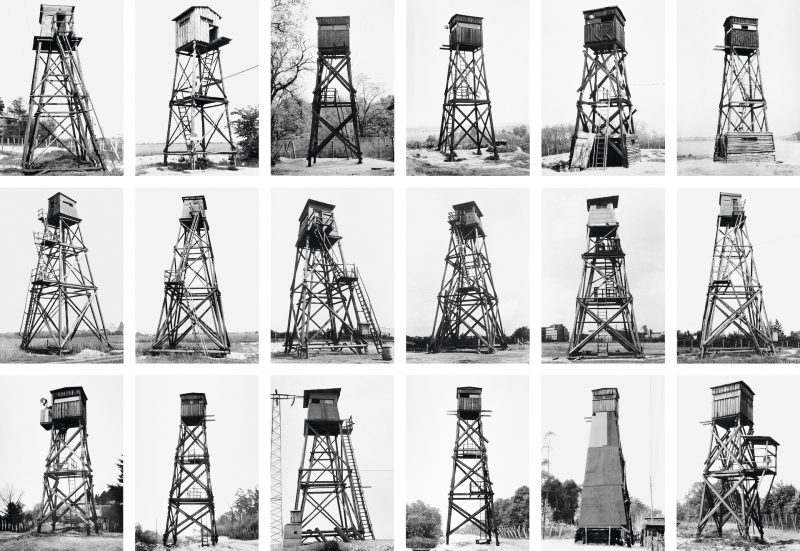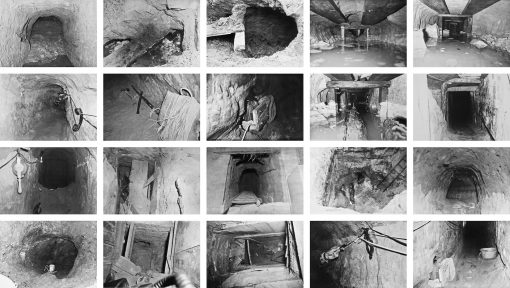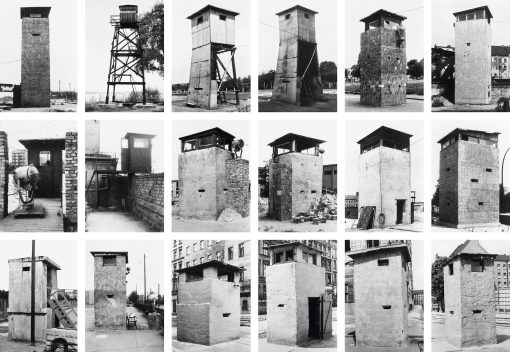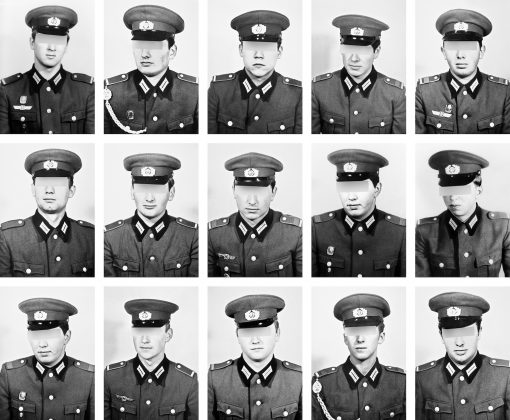Taking Stock of Power: An Other View of the Berlin Wall
By Arwed Messmer and Annett Gröschner
12/5/2019 — 3/15/2020

12/5/2019 — 3/15/2020
In light of the increasing concerns and rapidly changing developments related to Covid-19, The Walther Collection Project Space has closed to the public until further notice, effective March 14th, to ensure the safety of our visitors and staff. Please check back for further updates.
The Walther Collection is pleased to present Taking Stock of Power: An Other View of the Berlin Wall, a project developed by photographer Arwed Messmer and writer Annett Gröschner, both based in Berlin, following several years of collaborative research. Debuting during the thirtieth anniversary year of the fall of the Berlin Wall, the exhibition recalls the brutality of the Wall's physical reality and political symbolism, which today resonate anew.
Drawn from extensive research in the previously unexplored archives of the border troops of East Germany, Taking Stock of Power began with the discovery of thousands of 35mm photographs of the Wall, unearthed by the authors after years of being kept classified. Using these images, Messmer and Gröschner constructed an extraordinary, comprehensive photo-topography of the Berlin Wall in panoramic sequences. Several of these panoramas are featured in the exhibition, alongside typographical images of East German watchtowers, border guards, underground tunnels, and escape ladders. This artistic appropriation and interpretation captures the Wall—and its attendant technologies of surveillance—as an infamous urban structure, while revealing, in painstaking detail, the instruments and aesthetics of political power.
The pictures of the Wall, which Messmer and Gröschner later processed and assembled into panoramas, were taken by ordinary soldiers in the mid-1960s, as commanded by the border troop leadership. Private individuals were strictly forbidden to photograph the Wall in the eastern part of the city. The reason for making these images was not pictorial, but purely functional: they were meant to inventory the structural integrity of the Wall—which, in its early years, varied widely in form and material throughout its length—in order to assist engineers in planning for a series of renovations and reinforcements. Indeed, some of the border fortifications depicted seem rather provisional, a far cry from the pictures of the Wall made a decade later in the mid-1970s, with its industrially manufactured, unshakeable concrete.
However, each of Messmer and Gröschner's panoramic sequences is not necessarily relevant as a stand-alone image. Their approach is rather a conceptual one: the complete pictorial representation of all 160 kilometers of the Berlin Wall as it cut through the city. In the exhibition, this complete "documentation" is shown in 12 large-format volumes, laid out on a long table that makes reference to a reading room, and therefore to the origin of the material from the archives. As an additional interpretive layer, the panoramas are accompanied by quotations, selected by the artists from the daily reports of the border guards, which detail incidents that may not be captured in the image, but took place at the depicted locations within a similar time period.
Extending from this topographical core, the exhibition further displays related imagery of the East German border troops' multiple watchtowers along the Wall —some quite makeshift in their construction—installed in a grid and reminiscent of the building tableaux of Bernd and Hilla Becher. Another series shows anonymized identification photographs of East German Border Regiment soldiers, mandatory conscripts for a term of 542 days, in identical uniforms and poses. Finally, images of underground escape tunnels and ladders left behind after successful escapes offer a haunting indication of the desire to break through this physical and political barrier, and the border troops' efforts to document—and thus prevent—such acts. Juxtaposed with the assembled images of the Wall, this collective inventory of East Germany's surveillance infrastructure, and photographic records thereof, comes to life—troubling in its totality, but perhaps more so in its traces of humanity.
In its entirety, the resulting work becomes a fictitious document of an entire structure, never intended by its makers to exist in this format. Nevertheless, it has a much greater documentary—and affective—legibility than the raw material. As Messmer and Gröschner explain, "It is this overwhelming mass of images that shows a vulnerable and violated landscape and the aesthetic consequences of the decision to fully cut a barrier through a whole territory. The language of the files and images shows this edifice for what it really was—a seemingly endless barrier directed against the East German state's own population."
Messmer and Gröschner's project makes clear, on the one hand, how profoundly the Wall intervened in the topography of the city. On the other hand, it plainly conveys how much effort, strength, violence, and capital it takes to prevent people from exercising their freedom. And that walls cannot last forever.
Taking Stock of Power: An Other View of the Berlin Wall at The Walther Collection presents selections from a larger project of the same name, which debuted in 2016 as an exhibition at Haus am Kleistpark in Berlin, and an extensive accompanying catalog, which won a special juror's mention for PhotoBook of the Year from the Paris Photo–Aperture Foundation PhotoBook Awards. The entire, mammoth work forms a striking pictorial-documentary collection, comprising approximately 5000 individual photographs, with 1000 digitally assembled panoramic sequences. In dialogue with the images is a poignant textual dimension, such as long inventory lists of the guard dogs deployed at the border, complete with their characteristics and diseases, escape sketches, and complex text collages that thematize historical events and the linguistic aesthetics of the files. In addition to their artistic intervention, Messmer and Gröschner, in cooperation with the German Federal Archives, digitized and inventoried the previously unorganized material, which is now available for researchers.
Arwed Messmer was born in 1964 in West Germany. He has worked as a documentary urban photographer since the beginning of the 1990s, during which time he has devoted his work to documenting the changing face of Berlin. Since 2006, he has focused on image collections in archives, dealing with photographs that have lost their original documentary function. These investigations have given rise to extensive exhibitions and publications on East Berlin of the 1950s, the early years of the Berlin Wall, and the Stasi archives (with some of the projects carried out in collaboration with author Annett Gröschner). In 2014 he received a grant for Contemporary German Photography from the Alfried Krupp von Bohlen und Halbach-Stiftung for the project RAF – No Evidence, which was also nominated for the Deutsche Börse Photography Foundation Prize in 2018.
Annett Gröschner was born in 1964 in East Germany and has been a resident of Berlin since 1983. She is a writer, journalist, and lecturer. In her work, which includes novels, stories, plays, and literary non-fiction, she primarily deals with issues of social transformation in Berlin and eastern Germany, often incorporating archival material. Together with Arwed Messmer, she has produced several exhibitions and book projects about the early years of the Berlin Wall, the nuclear power industry, uranium mining in the GDR, and postwar Berlin.




